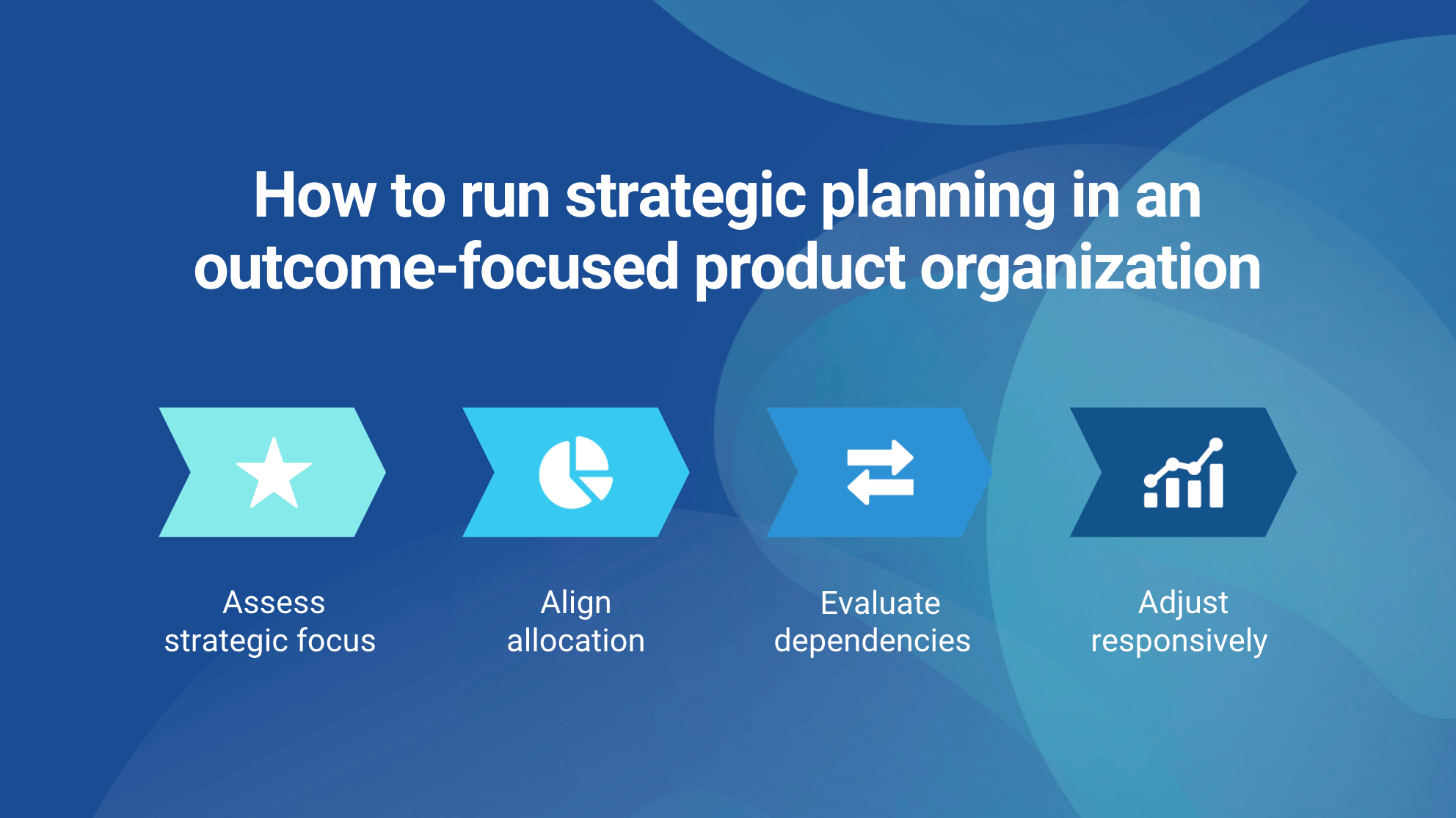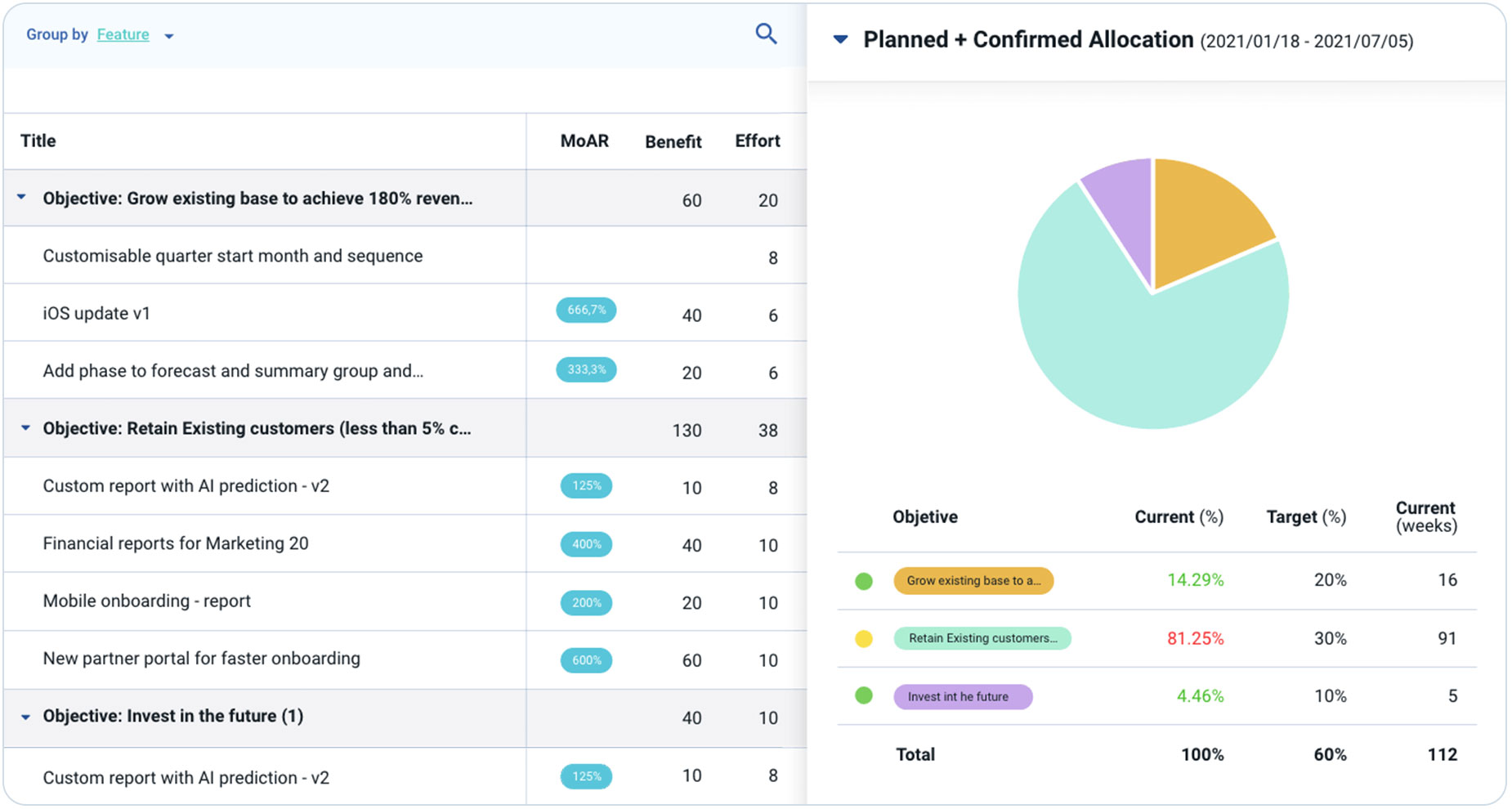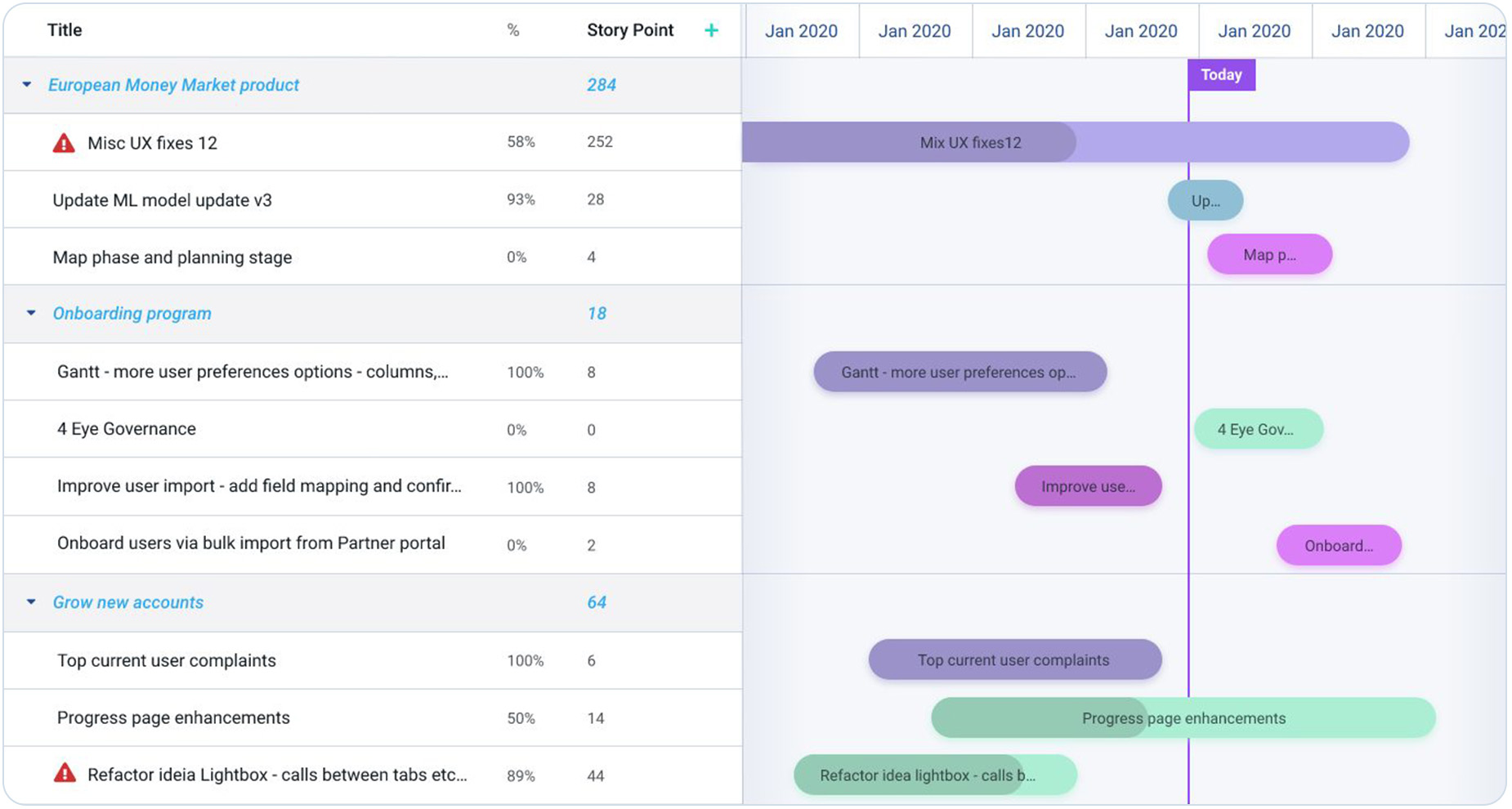How to Run Strategic Planning in an Outcome-Focused Product Organization

You heard it right – effective strategic planning is essential to outcome-focused product teams. But how do you conduct annual strategic planning and integrate it with agile product management? In this post, we’ll walk through how to run strategic planning in 4 steps. We’ll also cover how to connect strategic planning with responsive re/alignment and re/allocation to achieve portfolio outcomes.
First, let’s do a recap on why effective strategic planning is so essential to outcome-focused product teams.
You may have heard from product management best practices that empowered teams build the best products. According to Marty Cagan, the author of “Empowered”, there are 2 key elements from leaders to empowered product teams:
- Give product teams problems to solve, not features to build
- Enable them to have the necessary strategic context to understand “the why” to make good decisions.
The output of strategic planning enables the strategic context from leaders to their teams.
Step-by-Step Guide to “Annual” Strategic Planning
Strategic planning is the exercise for executive teams to align as well as define the strategic context for the company and the product teams. Let’s jump into the 4 steps of how to run effective “annual” strategic planning.
Step 1 – Align on Strategic Product Initiatives
First, executive teams must set out key business goals for the coming year. They may include doubling revenue, increasing existing customer adoption, and so on. How to achieve these goals depends on many factors, including the state of the business, market, product, technology, etc.
Additionally, hold a brainstorming session (or sessions) with leaders of all functions to create strategic bets or initiatives to achieve these business goals. These initiatives should not be “build XYZ feature”, but rather, “how do we achieve XYZ goal”. They should also be evaluated based on a variety of factors, from simple benefit/ cost to schematic patterns and balance between core vs. expansion vs innovation, etc.

Step 2 – Align on Budget Allocation
Secondly, to ensure sufficient resources for product teams, high-level T-shirt sizes are provided by functional leaders to understand the teams or skills needed. This can be based on staff month, or staff month by skills (design, mobile engineer, etc.) This allocation may also lead to additional juggling of step 1 if the budget is not feasible or too skewed.

Step 3 – Evaluate Business and Product Dependencies
This next step is conducted at a broader scope and is essential especially if some initiatives require longer-range planning, e.g. legal-related, licensing, partnership, etc. The portfolio level of visualization is by no means a committed plan, but rather a directional map for the correlated teams on the ecosystems and portfolio context they operate internally.

Step 4: Align on Roadmap
Lastly, you need to define the product plan for each of these bets and map them to intended outcomes and associated metrics. The outcome of the product changes should influence the future iterations of product planning. So planning becomes continuous and responsive monthly and quarterly, not just set in stone from the annual planning session. Make adjustments on focus and allocation based on product outcomes. Re-evaluate product prioritizations based on new inputs.
Why Switch From Annual to Continuous Strategic Planning?

Outcome-focused teams must connect long-term vision and near-term action iteratively as well as collaborate across teams to achieve shared goals. Outcome-focused teams review and reassess “annual” strategic planning continuously. Hence a responsive product portfolio platform is essential to keep both strategic and outcome context in one place.

Dragonboat is the fastest growing product portfolio platform for outcome-focused teams to strategize, prioritize, plan and deliver products that drive business results. With Dragonboat, product teams can connect OKRs, customer insights, and product initiatives in one source of truth PPM platform. Sign up for a free trial or book a demo.
